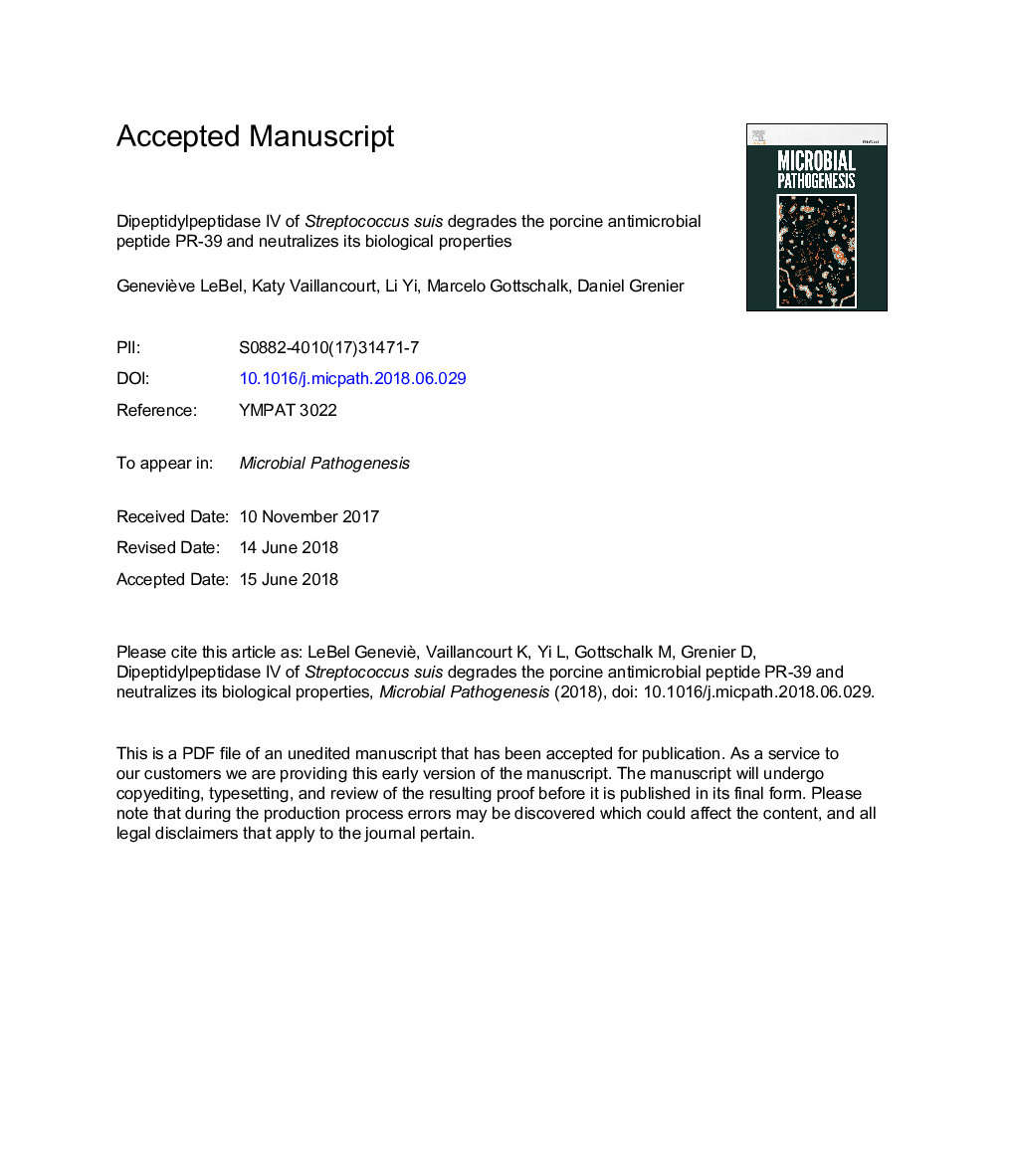| کد مقاله | کد نشریه | سال انتشار | مقاله انگلیسی | نسخه تمام متن |
|---|---|---|---|---|
| 8749317 | 1593667 | 2018 | 30 صفحه PDF | دانلود رایگان |
عنوان انگلیسی مقاله ISI
Dipeptidylpeptidase IV of Streptococcus suis degrades the porcine antimicrobial peptide PR-39 and neutralizes its biological properties
دانلود مقاله + سفارش ترجمه
دانلود مقاله ISI انگلیسی
رایگان برای ایرانیان
کلمات کلیدی
موضوعات مرتبط
علوم زیستی و بیوفناوری
ایمنی شناسی و میکروب شناسی
میکروب شناسی
پیش نمایش صفحه اول مقاله

چکیده انگلیسی
Streptococcus suis is a major swine pathogen causing pathologies such as meningitis, sepsis, endocarditis, and arthritis. Several surface-bound and secreted proteases produced by S. suis have been identified and proposed as virulence factors. PR-39 is a proline/arginine-rich antimicrobial peptide produced by porcine leucocytes. In addition to play a role in innate immunity, this peptide possesses immunomodulatory properties. In this study, we hypothesized that proteases produced by S. suis inactivate PR-39. Most strains of S. suis tested were relatively resistant to PR-39, with minimal inhibitory concentration (MIC) valuesâ¯â¥â¯200â¯Î¼g/ml. The proteolytic cleavage of PR-39 by recombinant subtilisin-like protease and dipeptidylpeptidase IV (DPPIV) of S. suis was assessed by SDS-PAGE. While PR-39 was not cleaved by the subtilisin-like protease, it was time-dependently degraded by DPPIV. Whole cells of S. suis also degraded PR-39. When S. suis was grown in a culture medium supplemented with recombinant DPPIV, its susceptibility to PR-39 was decreased. Activation of brain microvascular endothelial cells with PR-39 resulted in an increased secretion of the chemokine interleukin-8 (IL-8) thus confirming the immunomodulatory activity of this porcine antimicrobial peptide. However, a pre-treatment of PR-39 with DPPIV completely neutralized the increased IL-8 secretion. In this study, we showed that DPPIV produced by S. suis can degrade PR-39 and neutralize its antibacterial and immunomodulatory properties. This may allow survival of S. suis in the central nervous system by resisting to killing by this antimicrobial peptide and delaying the recruitment of phagocytic cells such as neutrophils to the site of infection.
ناشر
Database: Elsevier - ScienceDirect (ساینس دایرکت)
Journal: Microbial Pathogenesis - Volume 122, September 2018, Pages 200-206
Journal: Microbial Pathogenesis - Volume 122, September 2018, Pages 200-206
نویسندگان
Geneviève LeBel, Katy Vaillancourt, Li Yi, Marcelo Gottschalk, Daniel Grenier,